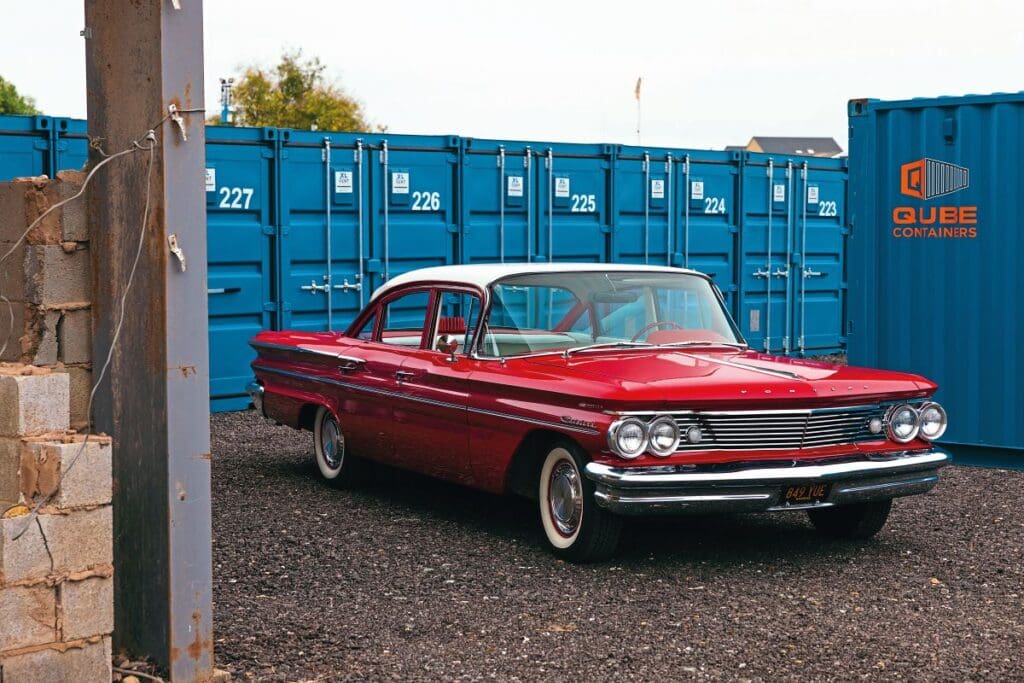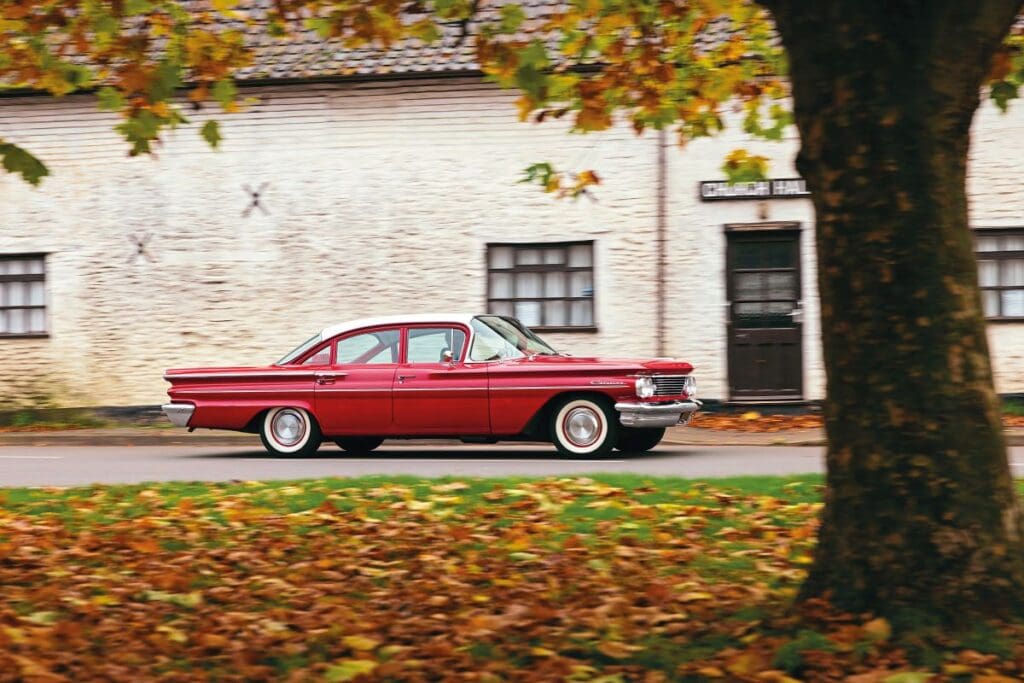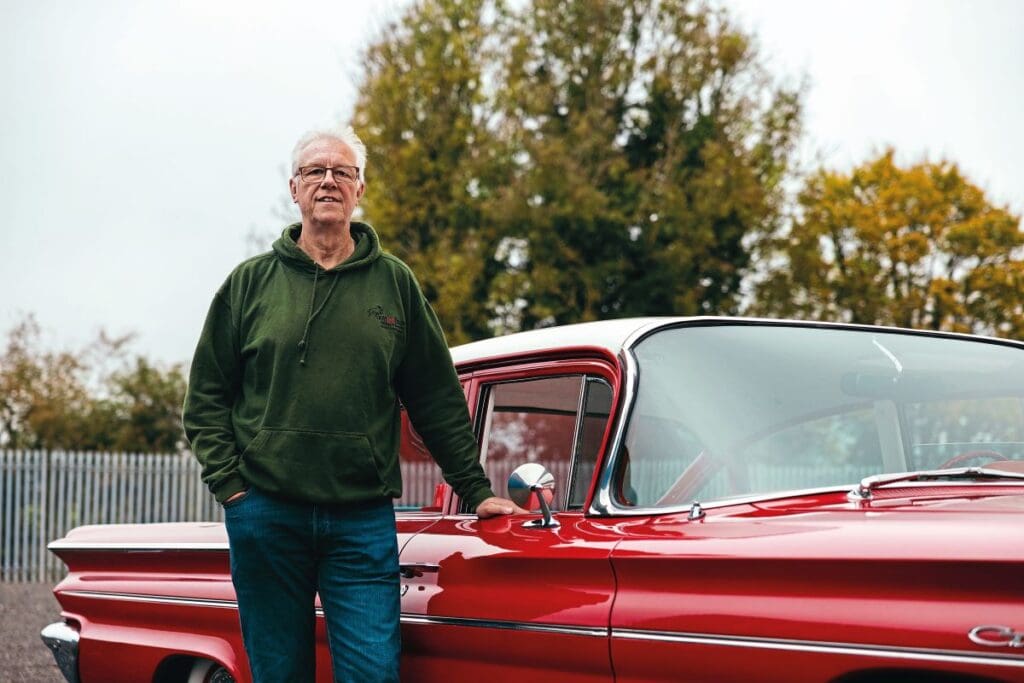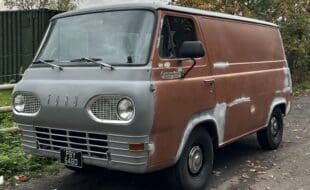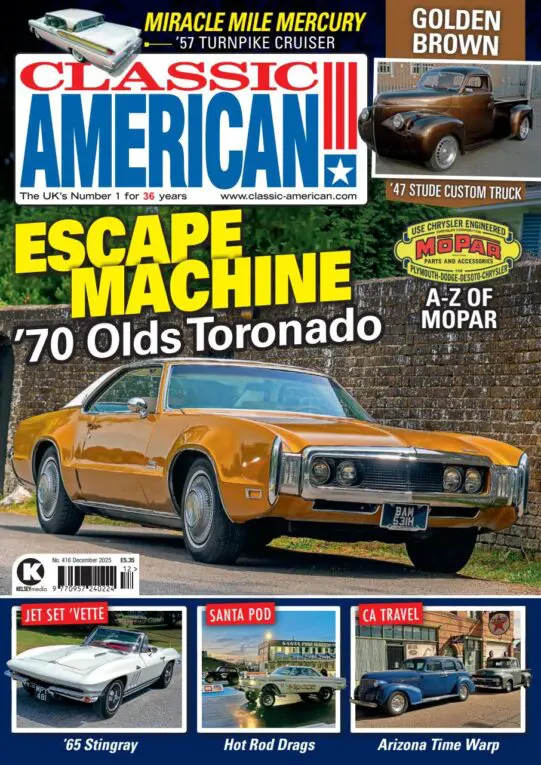If you’d just bought a classic Pontiac, you might suppose it would be the only one for a few miles around. Mick Elliott and Adrian Ball thought so too, until they met one day and discovered they both had old Ponchos stashed a few doors away from each other…
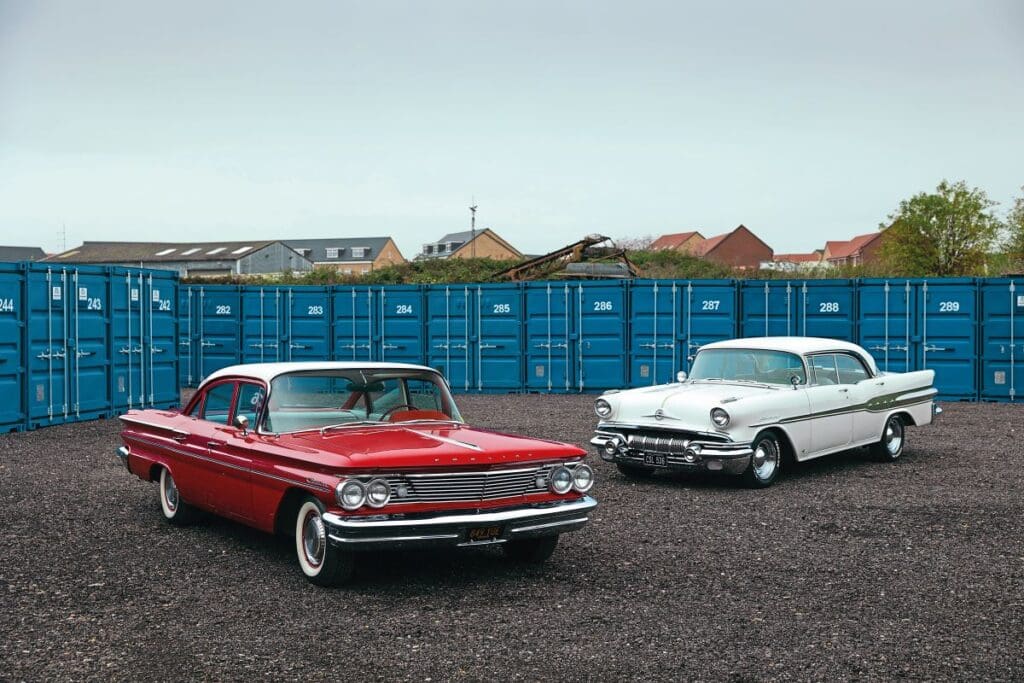
Words: Zack Stiling Photography: Gary Chapman
We are all garage voyeurs. Not one of us can walk past an open garage door without stopping and nosily peering inside, just in case somebody might have a lost Motorama show car stashed away at the back. More often than not we are disappointed and see nothing more than some cardboard boxes, a broken washing machine and a lawnmower, but every now and then our curiosity pays off, just as it did for Adrian Ball when he was out walking his dog and saw, through Mick Elliott’s garage door, the alluring sight of a 1972 Pontiac Firebird Trans Am.
Enjoy more Classic American reading in the monthly magazine.
Click here to subscribe & save.
Adrian and Mick live on the same cul-de-sac just three doors apart from each other, but Adrian never knew that Mick was harbouring a Trans Am, while it was news to Mick that Adrian was the proud owner of a 1960 Pontiac Catalina. To add to the coincidences, both had bought their cars from the King’s Lynn area only a few weeks apart. Needless to say, they stopped, they had a chat, they became friends. Since then, the similarities have grown that much closer, as Mick sold his Trans Am last summer and replaced it with a 1957 Star Chief Custom Catalina four-door.
Mick’s acquisition of the Firebird was the realisation of a lifelong ambition, but things didn’t work out quite as he’d hoped. “I’d always wanted an American car since I was a small child, but I remember my dad telling me I’d have to be earning £350 a week before I could afford one. That was a long time ago… Just after Covid, I managed to buy the Trans Am, but I got severely ripped off by a dealer. After I’d spent a lot of money on it, the Catalina came up on Facebook Marketplace, and I thought it was just perfect for me. I bought it pretty much sight unseen after the seller had sent me a video. I said that as long as I didn’t see any horror stories I’d buy it, but I still had to unload the Trans Am. I actually sold it back to the guy who imported it into the country.
“Initially, when I bought the Trans Am, I was of a mind to get a Fifties American car. It was always my dream, but the Trans Am scuppered it. I had a hankering after a ’57 Chevy and missed out on one, but I found I preferred the ’57 Pontiac as it’s a bit more highly specified trim-wise, plus it’s more unusual and you don’t see many on the road – it’s an extremely rare sight.”

’57 Heaven
For Pontiac, 1957 brought a lot of subtle improvements. It was the last year for a body which had looked slightly slab-sided when it was introduced in 1955, but extensive face-lifting made it appear far more modern and dynamic. As before, the Star Chief remained the top-of-the-range model, and the Custom Catalina badges were significant. Custom denoted the highest level of trim, while Catalina was the exotic appellation reserved exclusively for the hardtops. Setting aside the Star Chief convertible and the newly introduced, ultra-low-production Bonneville, which was almost double the price, the Custom Catalina was the most glamorous offering in Pontiac’s ’57 range. The four-door was also the second-most popular model after the Chieftain Catalina coupe. Plenty of Americans had money to splash out on a new car, and an extra $100 was no consideration if it secured some extra luxury and style.
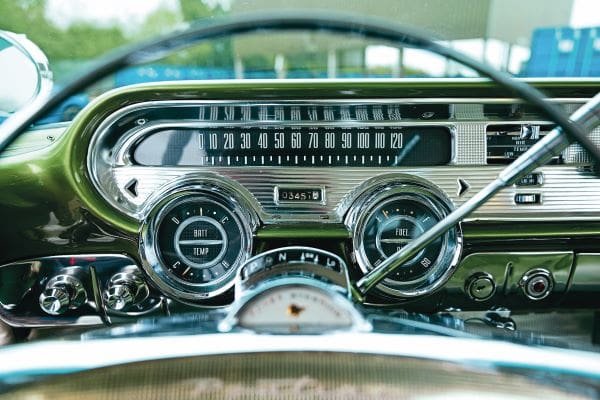
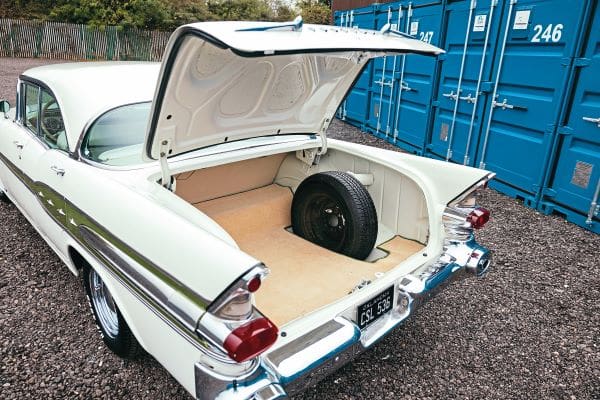
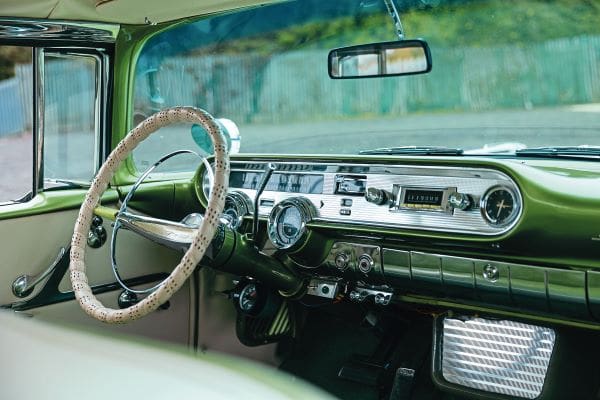
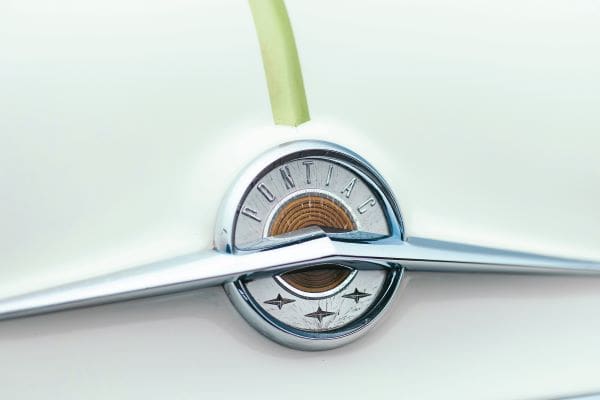


Under the bonnet, Pontiac enlarged its V8 to 347cu in, following comments that its 317cu in V8 had been underpowered. In the Star Chief, output jumped from 227 to 270bhp, but that’s all moot where Mick’s car is concerned because, despite its unassuming appearance, it’s a bit of a hot rod. The powerplant suits Mick particularly well, as it’s a 455cu in V8 from a 1973 Trans Am, mated to a TH350 automatic from the same car, and it produces a bit over 300bhp. The fact it appears now as a lively street machine with the look of a traditional boulevard cruiser can be attributed to a couple of recent owners who have each left their mark, and Mick gives them a lot of credit for taking such good care of it.
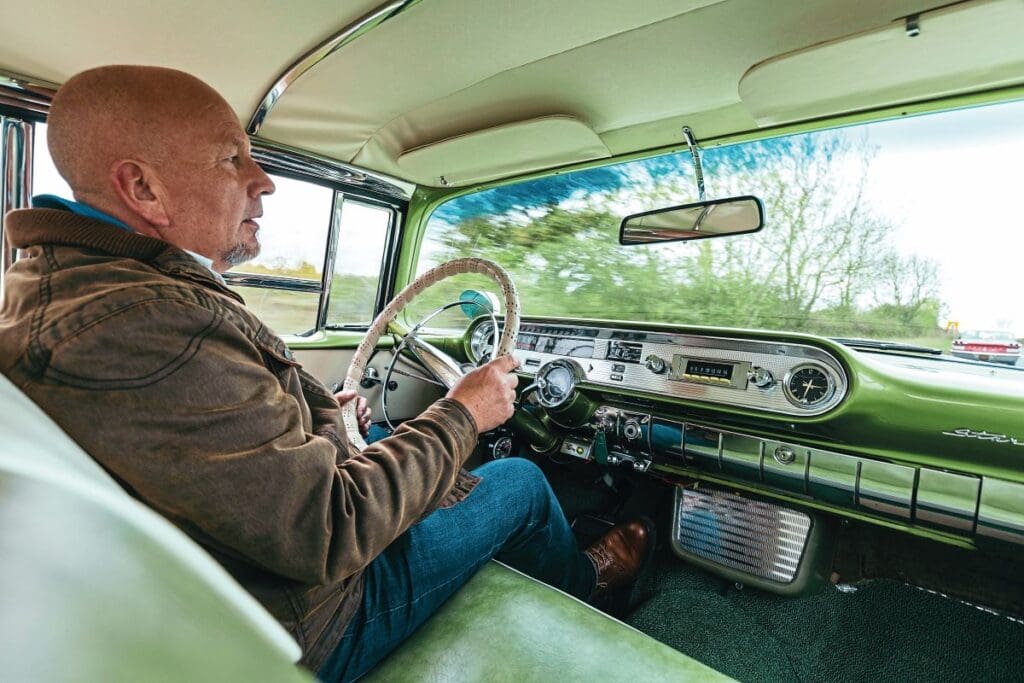
History-wise, the car is understood to have been owned from new by the Frantz family of Sulphur, Oklahoma, until it was sold and imported into Britain in 1989. Originally, it was painted Seacrest Green, with Limefire Green accents, but that was changed when the car was in Bideford, in the hands of Daniel Dawson. He carried out a chassis-up restoration in which the car was completely repainted, retaining the Limefire Green accent, as well as being reupholstered in its original style. It was also during this time that the car received its engine and gearbox transplant.
From Devon, it travelled all the way to Sheffield, when it was bought by Mark Thorpe, who enjoyed it for many years. Thorpe reported that the car was running perfectly well when he owned it, but he nevertheless took the engine out to have it brought up to the optimum specification. The work he had in mind was performed by Vospower Ltd (see Facebook or call 07946 376019) which completely refreshed the internals with new plus-0.060 forged pistons, and a new crank, bearings, cam and lifters. They reconditioned the heads, ground the valves, fitted new bronze exhaust guides and renewed the cam bearings and all the chains. That was back in 2016, and it has been a dream ever since.
Thorpe wasn’t finished there; he also commissioned a gearbox rebuild, had the front bumper rechromed and fitted a Holley 3210 four-barrel carburettor, plus assorted engine dress-up parts. That all amounted to a small fortune, and Mick is indebted to him for passing on such a good car. It hasn’t really needed any attention since he bought it in August 2024, but Mick is nevertheless a keen tinkerer, so he’s found ways of keeping himself busy.
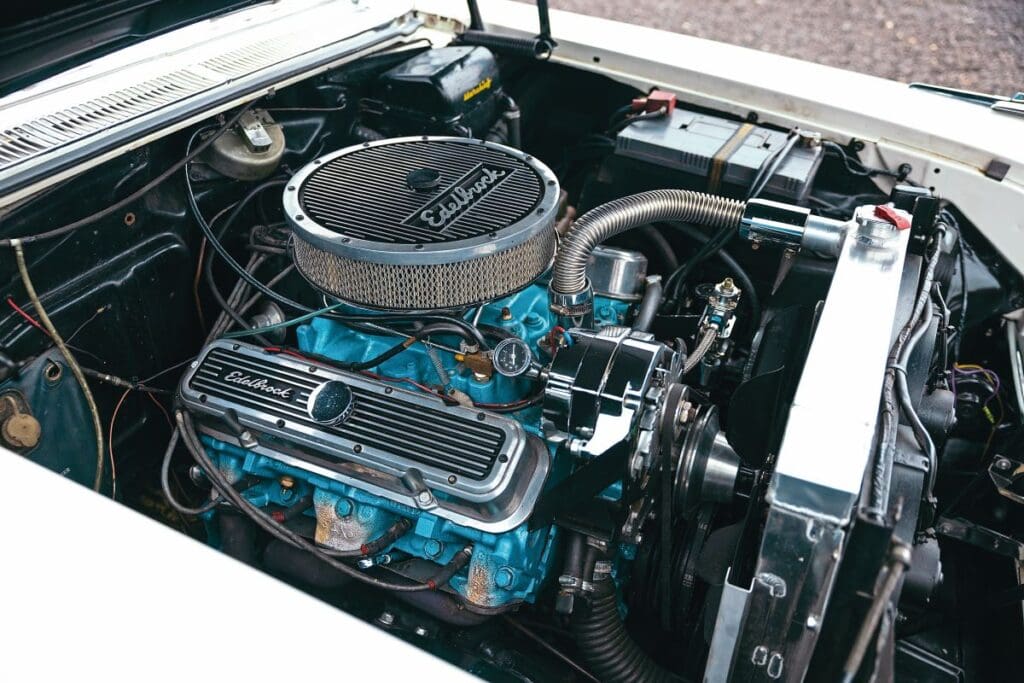
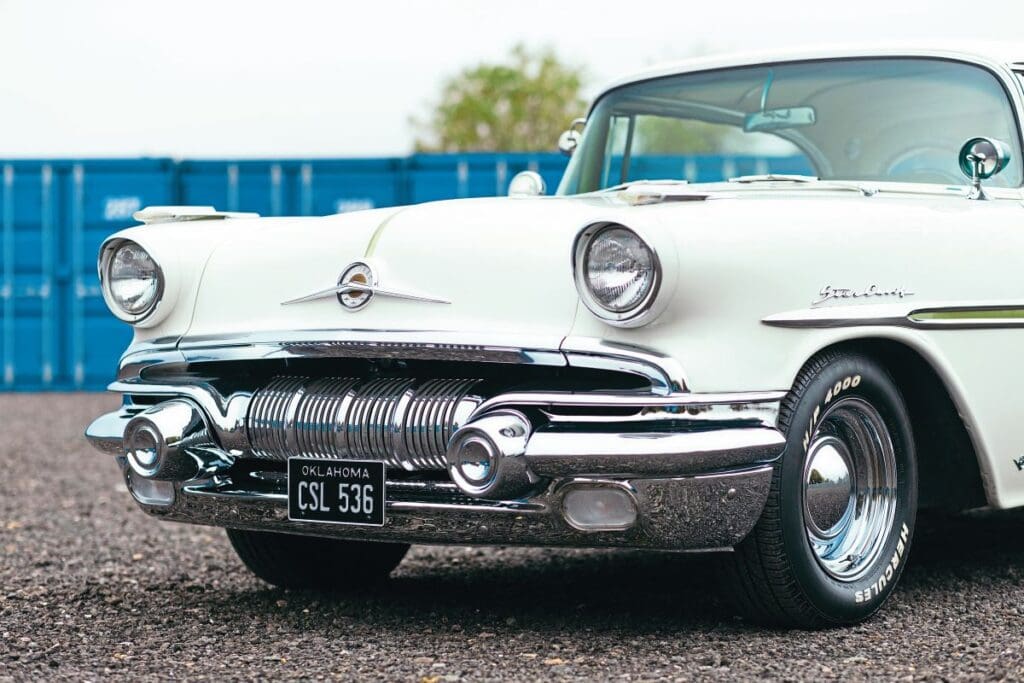
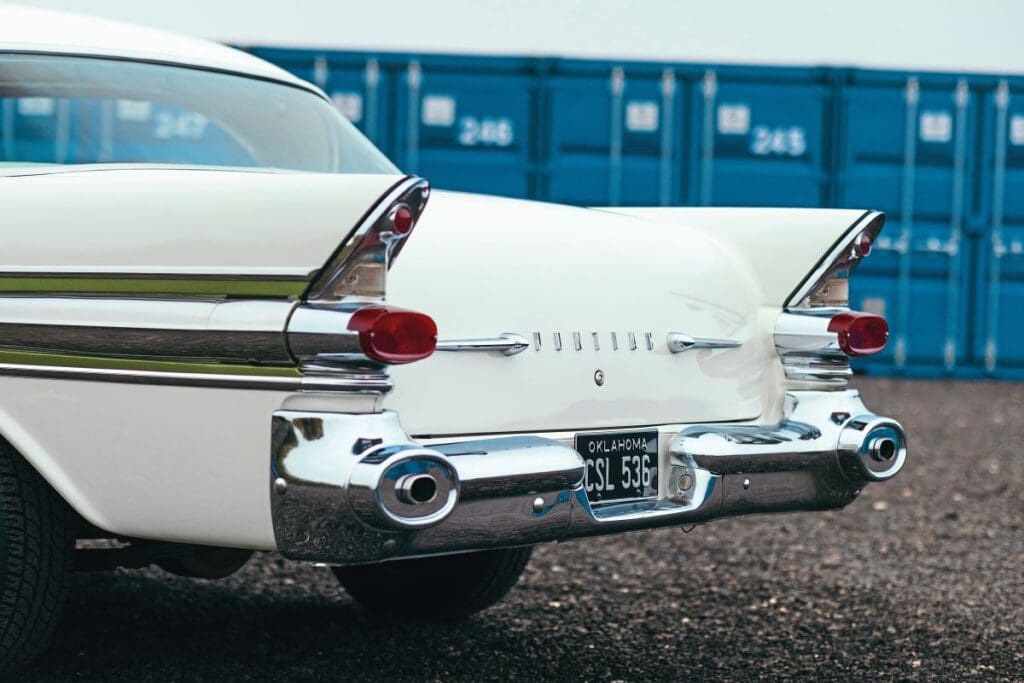
“Mark did me a stunning deal, so I drove the car back and since then it’s just been a case of polishing and servicing. I’ve given it a thorough interior and exterior detailing,” he says. “I have also lowered the rear suspension as I felt the car sat too high at the rear, along with fitting a high-torque starter motor to eliminate the heat-soak, hot-starting problems which the 455 was renowned for. There will always be jobs to do. It still retains a nice appearance, but some things are starting to come through. That’s all part of the fun of having them, though, and doing a bit of tinkering.”
For Adrian, it’s been a very similar story. “I first got interested in American cars when I was about 20, and I’m now 63, so it’s been a 40-year ambition to own a classic American. I got into them when I went to the Rally of the Giants at Knebworth, and there were a lot of Fifties and Sixties cars there. I was never able to afford one, but if we fast forward, I finally got the opportunity, and I’ve had my Pontiac since August 2023. For 24 years, I was a driving instructor riding around in Nissan Micras, but all I really wanted was to be in a big American Fifties car!”


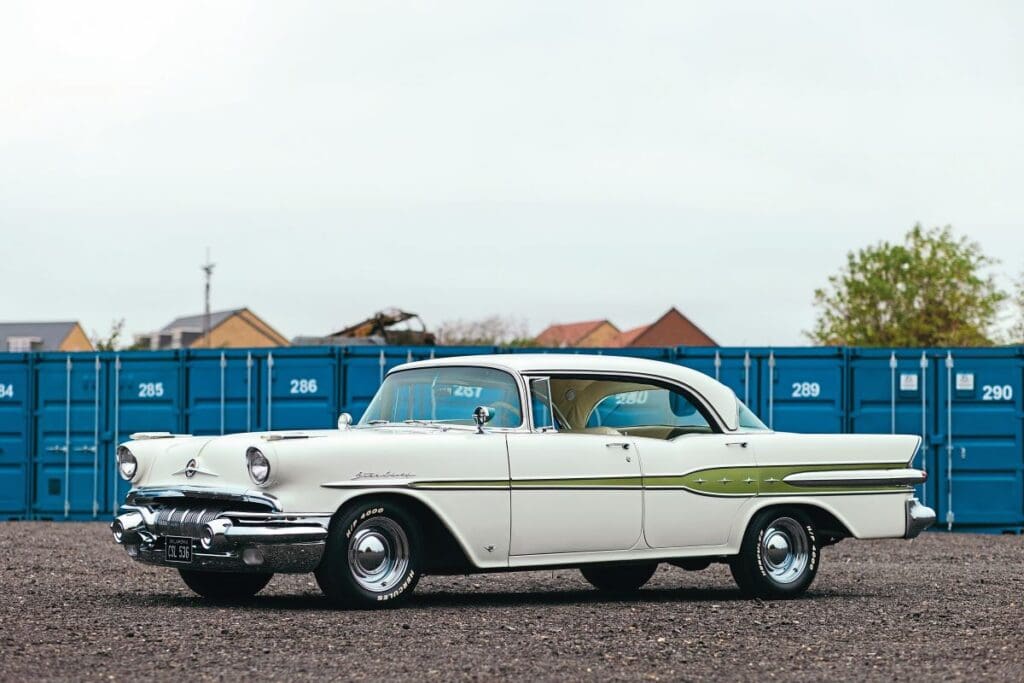
Enter the Swingin’ Sixties
Although only three years separate Adrian’s Catalina from Mick’s, it’s a very different car. Gone are the curves and the great big fins of the Fifties; the low, flat, razor-edged styling of the red car identifies it unmistakeably as a herald of the fresh new decade. It was an evolution of a new body introduced in 1959. Engines had increased in size and power annually from 1955, but the 60s inherited the previous year’s 389 V8, with minimal changes. There had also been a major reshuffle of the nameplate hierarchy. In 1959, Catalina ceased to denote a hardtop and was applied instead to Pontiac’s base model. By this time, however, Americans were spending more conservatively and the Catalina four-door sedan, at $2702, was America’s 1960 best-seller, with 72,650 produced.
The other respect in which the two cars differ is that Adrian’s is all-standard. It has a three-speed automatic, but nothing that could be deemed non-essential; no power-steering, -brakes or -windows and no air conditioning. Its first owner obviously wasn’t pushing the boat out and probably paid the base price.
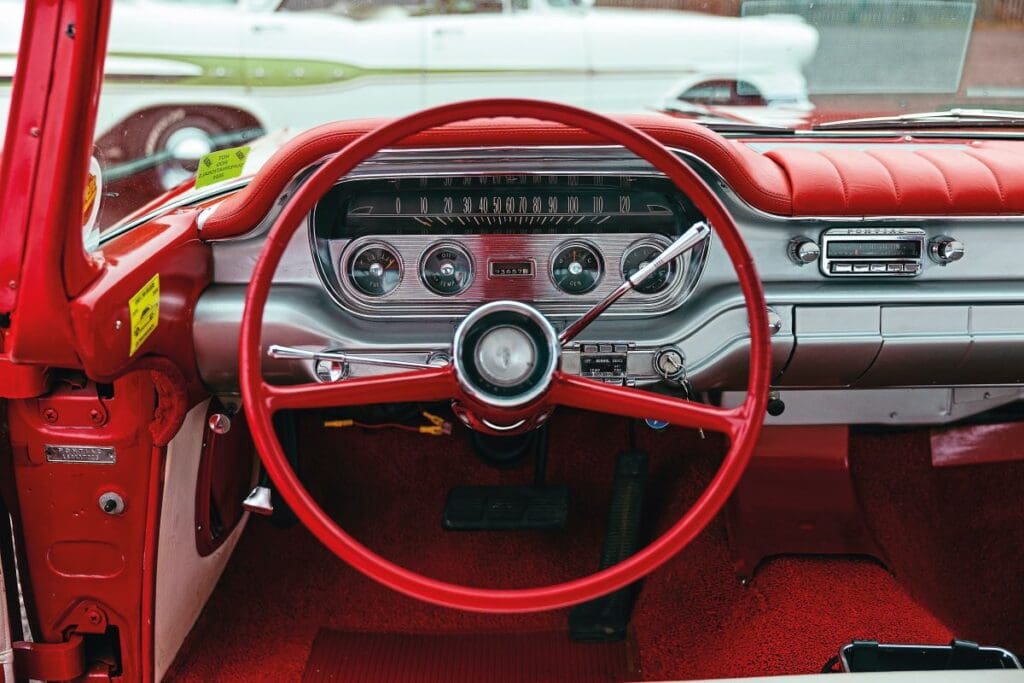

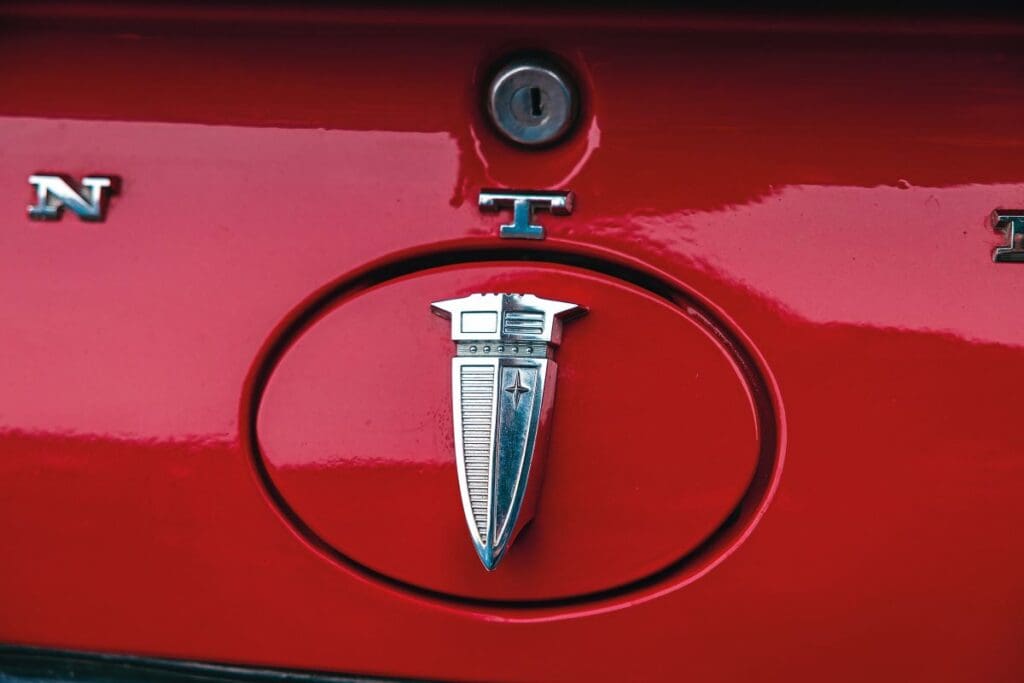

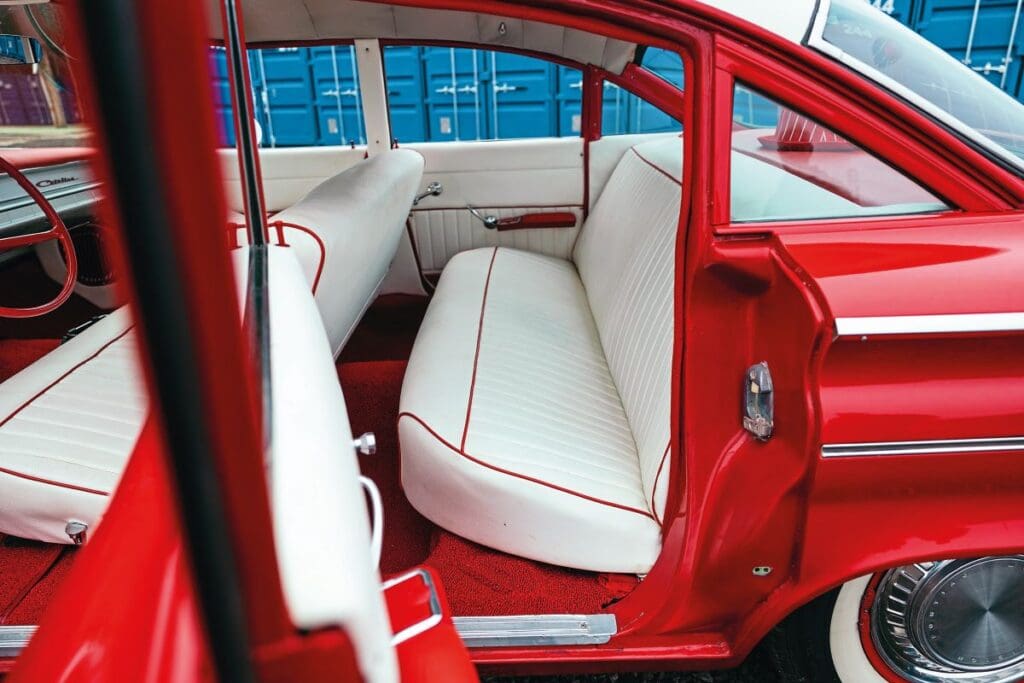
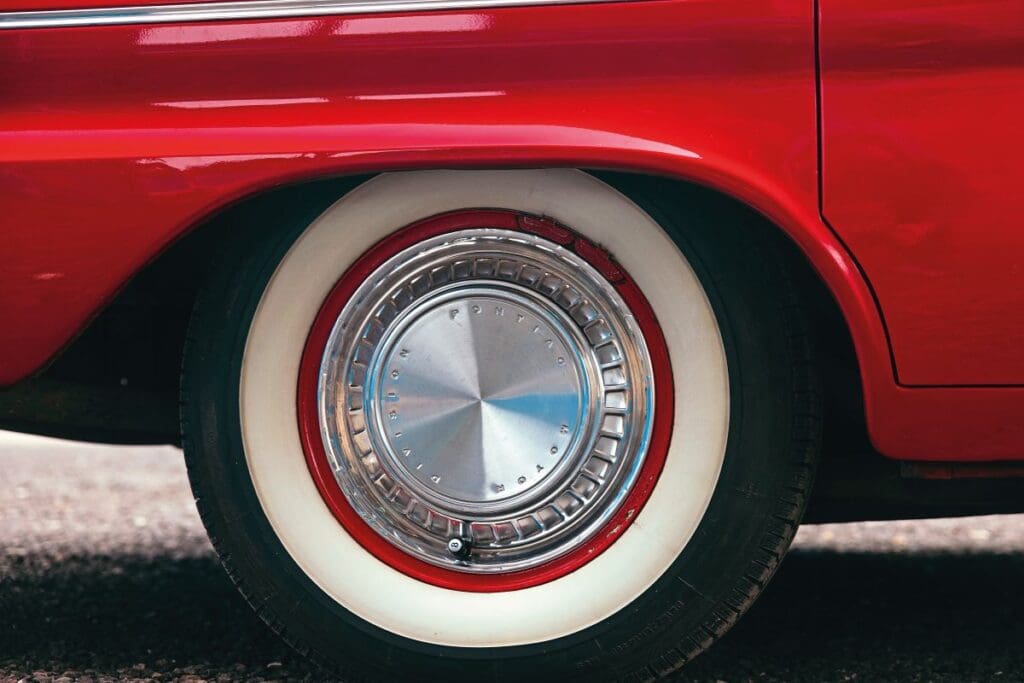
“I found it on eBay,” he recalls. “I’d made up my mind that I was going to have an American car and I just kept watching the adverts. It was the style and the era I wanted, and it was a bonus that it was red and white (Adrian is a committed Arsenal fan). It had to be something in really good condition that I could afford, from the late Fifties or early Sixties, and it had to be a four-door, or station wagon, because I wanted to enjoy it with family.
“It was imported from America in 2011, but it lived most of its subsequent life in Norfolk until I bought it 18 months ago. It’s got Kansas plates on it, so I assume that’s where it came from. The interior’s been redone quite tastefully and I think it was done in this country. At some stage it’s had a respray, but I don’t know where or when. The engine’s the original. I think the brakes could do with a service, but the bodywork’s great and the interior’s all good, so it’s just maintenance now, hopefully.”
Adrian has suffered only one problem with the Pontiac so far, for which reason he is very pleased that he got to know Mick. “Early last year I had an electrical problem. The engine would just stop; it would go about 10 yards and then stop. I took it to a garage, but they messed about and made it worse. Mick was poking around behind the dashboard and he traced it to a loose wire at the back of the ignition switch. Since he took that off and resoldered it for me, it’s been as right as rain. I’ve done a lot of shows and it’s super-reliable. I think Mick likes working on cars, whereas I prefer driving them, but that suits Mick because he’s got another car to play with now and he’ll fix things for me. I just have to buy the coffees and bacon rolls when we go to shows!”
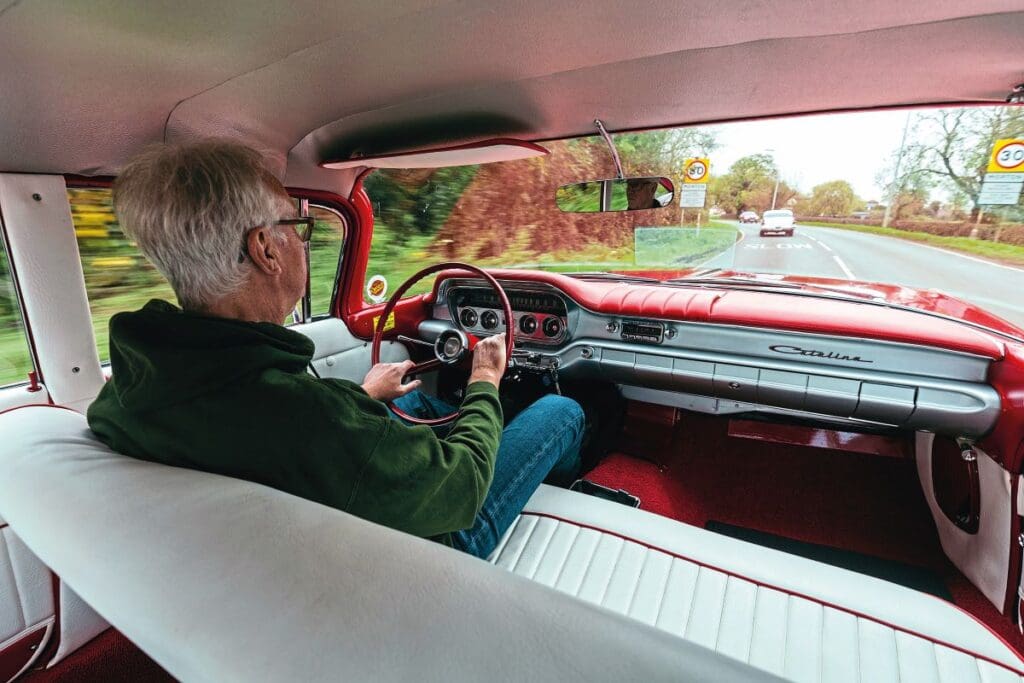
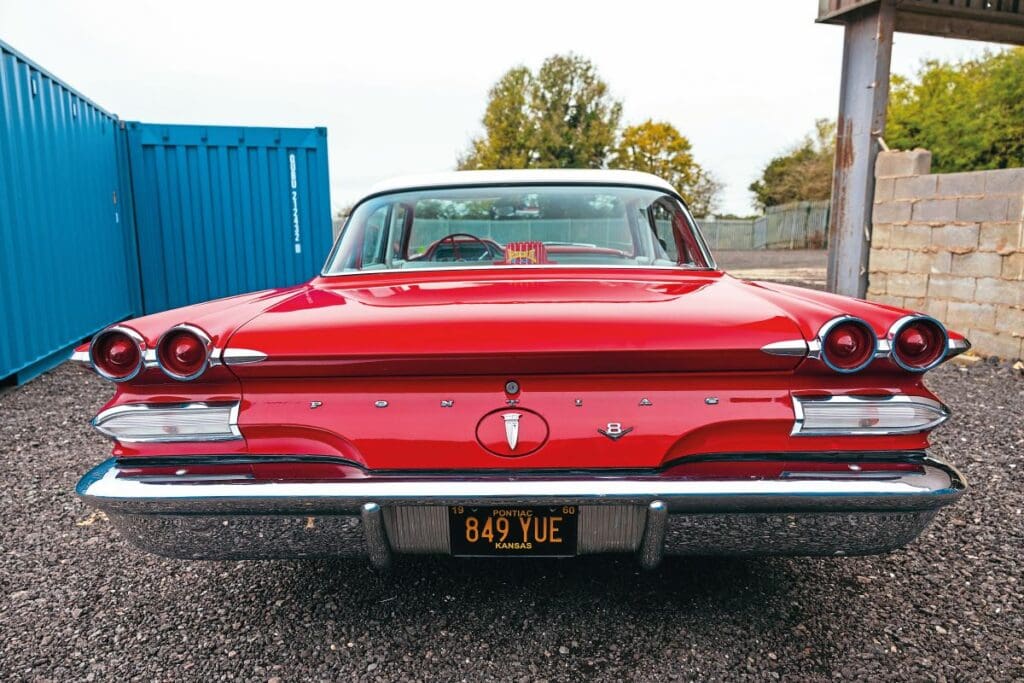

In fact, Mick gets plenty of enjoyment from the driving, too, and he’s put about 3000 miles on his Star Chief. The two Pontiacs often travel in convoy to shows and, of course, the contrast in road manners between the modified car and the standard one is marked. Says Mick: “Mine’s a lot more hot-roddish, it’s very ‘point and spurt’. Adrian’s car drives in a more luxurious and refined manner. The performance of mine is very good, and it’s had a brake upgrade with Wilwood discs and a dual master-cylinder, but no servo. The handling is typically Fifties; it’s not terrible, but you wouldn’t want to go throwing it round. You’ve got to be mindful how you use the power.”
Adrian is quite happy to drift along sedately. “It’s a big old cruiser, not a sprint car, which is what I wanted. It won’t go round corners fast, but I’m not bothered about that. It gets me and family and my two dogs in it, and we all have a nice time without being in a rush.” Mostly, the two cars are just taken out to shows, although Adrian also makes the most of his for weekends away. “On one of my first excursions, I won Best American Car. We get to shows quite often now. Adrian’s very keen, he’s got his finger on the pulse.” They aren’t just confined to local village-green affairs, either. From their Lincolnshire cul-de-sac, Adrian has taken the ’60 to Classics on the Common in Harpenden, and Mick has no qualms about taking the ’57 to Wheels Day in Newbury. “I’ll happily drive for a couple of hours at a time,” Adrian affirms. “On the motorways, it keeps up with the lorries and the rest of the traffic, but it does it far more stylishly.” If there’s a moral to this story, it is surely this: always turn your head towards an open garage door; it could be the beginning of a very firm friendship. Whether you and your fellow enthusiast will become “the Mortimer and Whitehouse of the American car world”, as Mick describes himself and Adrian, is another matter, but you’ll have a lot of happy motoring ahead of you regardless…
